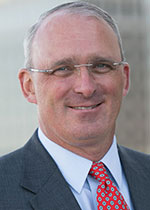As fundraisers, we are blessed with the task of inviting donors to invest in the organizations that we represent. Of course, outright gifts are preferable as the funds can be put to use right away helping others. But planned gifts of all types can be an attractive addition to a donor’s commitment to a particular cause.
When considering how to approach a particular donor, we should always keep in mind the possibility of a blended gift: one that includes an outright commitment as well as a planned gift. Blended gifts can make a way for a donor to marry the very important long-term goal they want to accomplish while seeing that goal partially accomplished during their lifetime.
If you are in a campaign, it is critical that your organization have campaign counting guidelines that dictate what sort of gifts are able to be credited to the current campaign. Be sure that the guidelines allow for the counting of blended gifts and under what circumstances. For example, most campaign counting guidelines allow for bequest intentions of various types to be counted at full face value if the donor is above 70 years old, at a discounted rate between ages 50-70, and not at all for those below 50. Obviously, with these guidelines in place, most blended gift conversations are going to occur with older donors.
Blended gifts are ideally suited for gifts to fund an endowment. The outright portion of the gift allows the donor to establish a new endowment or add to an existing one. The bequest or planned gift portion of the gift then is added to that same endowment when it is realized. Let’s say a donor to a university wants to support the faculty in a particular department. She cannot afford to establish an endowed chair for $2.5 million during her lifetime but really wants to do so in memory of her husband. You suggest that she pledge $500,000 over five years (which she can afford) to establish an endowed fellowship in that department and then provide for an additional $2 million to be added to the endowment through her estate which would fully fund the chair.
These types of blended gifts can also include a life income component. In the example above, that same donor could establish a charitable gift annuity with a portion of the $2 million balance toward the chair, which would provide her income for her lifetime and then the remainder of that annuity would be credited to the endowed chair upon her death. Of course, a provision would have to be made should the annuity remainder severely decline in value during her lifetime so that the threshold of $2.5 million is still met.
When conducting a campaign for a capital project such as a new building, blended gifts can be more challenging as the remainder may not be received for some time, but the organization needs to expend current funds. A conversation should occur with the chief financial officer and the board of trustees before the campaign about the possibility of blended gifts being counted in such a campaign. Certain blended gifts could positively impact the borrowing capacity of the organization but typically only in limited circumstances.
Blended gifts can also be an effective way for a donor to reach a certain cumulative giving threshold. Many organizations have started cumulative giving societies with minimum threshold for inclusion at $1 million with significant recognition and exclusive events. A blended gift can allow a donor to reach that threshold amount and be included in that society. Consider a long-serving board member who is important to the organization but who does not have the same financial capacity as other members. A blended gift can be a way for him to be included in the society and recognized alongside his wealthier peers.
Our role is to encourage our donors to be as generous as they can and to deepen their relationships with our organizations. Blended gifts are an excellent method of accomplishing both of those goals.
By Stuart P. Sullivan

Stuart is Chief Development Officer of Shriners Hospitals for Children. At the time of this article he was Senior Vice President with Graham-Pelton. He has served in executive positions at The Children’s Hospital of Philadelphia, Temple University, the University of Pennsylvania, and Roanoke College.
As development professionals, one of our most important skill sets is the combination of asking meaningful questions and then actively listening to the responses from prospective donors. My standard is that if the development officer is speaking significantly more than 20% of the time, that development officer is not doing his/her job effectively.
Particularly when a planned gift is involved, these conversations require patience, active listening skills, a greater amount of time devoted to each prospective donor, and gaining a sense of what meaningful goal the donor wishes to accomplish. (Learn more about planned gifts at our Planned Giving Boot Camp.)
Below are a few examples of how you might carefully begin a discussion with a donor about a blended gift:
These types of conversations lead to gifts that allow donors to achieve what is so important to them and meet the needs of an organization, present and future. A blended gift is a “win-win” for all parties involved.
800.490-7090
484.680.7800 local
Succeed@MajorGifts.com
Stay Informed!
Webinars, free downloads, tax law changes, more. Subscribe today. You can unsubscribe at anytime.
Copyright 2024 © PlannedGiving.Com
Stay informed with timely news. You can unsubscribe at any time.
Success List